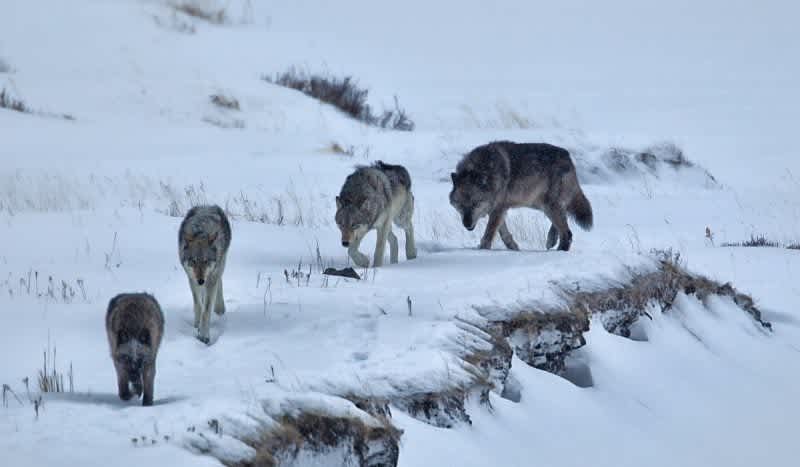New Survey Offers Details About Michigan’s 700 Wolves
OutdoorHub Reporters 08.06.20

The Michigan Department of Natural Resources recently completed a wolf population survey, which estimates a population of nearly 700 wolves roaming the state’s Upper Peninsula.
In their press release on the matter, the DNR states Michigan’s wolf population has remained “relatively stable over the past nine years.” The most recent survey was completed this past winter between the months of December and March, before wolves had produced pups and the population was at its lowest point in the annual cycle.
“The survey is important because it helps us monitor wolf distribution and abundance, answer research questions and evaluate progress toward state and federal recovery goals,” Dan Kennedy, acting chief of the Wildlife Division said. “Our survey results continue to demonstrate that Michigan’s wolf population has recovered.”
DNR Wildlife Division staff who participated in this latest survey estimate there was a minimum of 695 wolves found among 143 packs across the Upper Peninsula. Pack size has remained stable and averages just under five wolves.
“Once survey units have been identified for a given year, surveyors drive roads and trails in trucks and on snowmobiles looking for wolf tracks,” said Dean Beyer, a DNR wildlife research biologist who organizes the sampling and generates the wolf population estimate for the biennial survey. “Once they find wolf tracks, surveyors follow the tracks as long as is practical to determine the number of individual wolves that made the tracks.”

The wolf survey is completed by DNR Wildlife Division and U.S. Department of Agriculture Wildlife Services staff who search specific survey areas for wolf tracks and other signs of wolf activity, such as territorial marking or indications of breeding.
“Surveyors try to locate adjacent packs on the same day, to ensure they are not double-counting the same wolves,” said Beyer. State and federal wildlife staff also trap wolves in the spring and outfit them with GPS collars to help determine pack boundaries. This helps determine which tracks belong to each pack during the winter survey.
In 2019-2020, approximately 62% of the Upper Peninsula was surveyed.
After wolves returned naturally to the U.P. through immigration from Minnesota, Wisconsin and Ontario in the 1980s, the population rebounded remarkably over time. The pronounced long-term increase in wolf abundance is evident, despite human cause-specific mortality, such as poaching and vehicle collisions.
Over the past decade, Michigan’s minimum estimate has hovered between 600 and 700 wolves, which is indicative of a stabilizing population.
“Given the relatively consistent abundance estimates since 2011, it appears the wolf population has likely reached the carrying capacity of the Upper Peninsula,” said Cody Norton, a wildlife management specialist with the DNR’s bear, wolf and cougar program in Marquette.
In 2012, wolves were removed from the federal endangered species list for Michigan, Wisconsin and Minnesota, though a 2014 federal court order saw that they returned to the list. That court order is currently under appeal.
Wolves in Michigan remain a federally protected species and may be killed legally only in defense of human life.
More information about Michigan’s wolf population can be found at Michigan.gov/Wolves.

